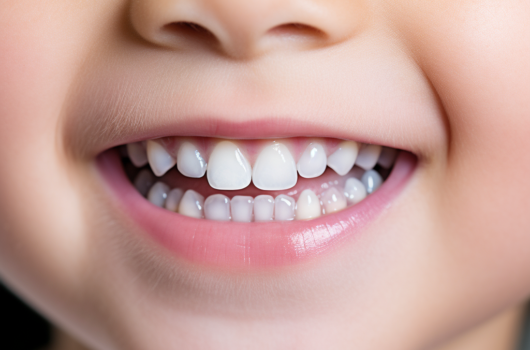White spots on toddler teeth can be a cause for concern among parents and caregivers. These mysterious marks often appear out of nowhere, leaving many wondering about their causes and treatment options. In this article, we will delve into the various factors that contribute to white spots on toddler teeth, including dental enamel hypoplasia, fluorosis, diet, oral hygiene practices, and genetics. By understanding these causes and exploring effective treatment options, parents can take proactive steps to ensure their child’s dental health.
- What Causes White Spots on Toddler Teeth? Exploring the Culprits
- Understanding Dental Enamel Hypoplasia: A Common Cause of White Spots in Toddlers
- Fluorosis and its Role in White Spot Formation: How to Prevent and Treat it
- Other Factors Contributing to White Spots on Toddler Teeth: Diet, Oral Hygiene, and Genetics
- Treatment Options for White Spots on Toddler Teeth: Expert Recommendations and Home Remedies
What Causes White Spots on Toddler Teeth? Exploring the Culprits
There are several potential culprits behind the appearance of white spots on toddler teeth. One common cause is dental enamel hypoplasia – a condition characterized by underdeveloped tooth enamel. This condition occurs during tooth development in early childhood and can result from various factors such as malnutrition or illness during pregnancy or infancy.
Another significant contributor to white spot formation is fluorosis – an excessive intake of fluoride during tooth development stages. Fluoride is essential for preventing cavities; however, when consumed in excess through sources like water or toothpaste ingestion at an early age, it can lead to discoloration and white spot formation.
Understanding Dental Enamel Hypoplasia: A Common Cause of White Spots in Toddlers
Dental enamel hypoplasia refers to incomplete or defective development of tooth enamel due to disruptions during its formation stage. It commonly manifests as white spots but may also present as pitting or grooves on the surface of affected teeth.
Several factors contribute to dental enamel hypoplasia in toddlers:
1) Malnutrition: Insufficient intake of essential nutrients like calcium and vitamin D during pregnancy or infancy can impair proper tooth development.
2) Illnesses: Certain illnesses such as high fever or infections experienced by infants before their teeth erupt can disrupt enamel formation.
3) Medications: Some medications, such as antibiotics like tetracycline, when taken during pregnancy or given to infants, can cause enamel hypoplasia.
Fluorosis and its Role in White Spot Formation: How to Prevent and Treat it
Fluorosis is a condition caused by excessive fluoride intake during tooth development. It typically occurs between the ages of 6 months to 5 years when children’s permanent teeth are forming beneath their gums. Mild fluorosis may result in white spots on the teeth, while severe cases can lead to brown stains or pitting.
Prevention plays a crucial role in managing fluorosis:
1) Monitor fluoride intake: Ensure that your child receives an appropriate amount of fluoride through sources like toothpaste and water. Consult with a pediatric dentist for guidance on proper dosage.
2) Use age-appropriate toothpaste: For children under three years old, use only a smear of toothpaste containing no more than 1000 ppm (parts per million) of fluoride.
3) Supervise brushing: Encourage proper brushing techniques and supervise young children to prevent them from swallowing excess toothpaste.
Other Factors Contributing to White Spots on Toddler Teeth: Diet, Oral Hygiene, and Genetics
While dental enamel hypoplasia and fluorosis are common causes of white spots on toddler teeth, other factors also play significant roles. Diet is one such factor – consuming excessive sugary foods or acidic beverages can erode tooth enamel over time, leading to white spot formation.
Oral hygiene practices also contribute; inadequate brushing or irregular dental visits increase the risk of plaque buildup and subsequent demineralization of enamel.
Genetics may predispose some individuals to have weaker enamel structures that are more prone to developing white spots. Understanding these additional factors allows parents and caregivers to take proactive steps towards prevention.
Treatment Options for White Spots on Toddler Teeth: Expert Recommendations and Home Remedies
When it comes to treating white spots on toddler teeth, the approach depends on the underlying cause. For dental enamel hypoplasia, treatment options may include dental bonding or veneers to improve the appearance of affected teeth.
In cases of mild fluorosis, professional tooth whitening treatments can help reduce the visibility of white spots. Severe fluorosis may require more extensive interventions such as microabrasion or dental crowns.
Home remedies like remineralizing toothpaste containing fluoride and calcium phosphate can also aid in reducing white spot visibility by promoting enamel repair. However, it is essential to consult with a pediatric dentist before attempting any home remedies.
Understanding the causes and treatment options for white spots on toddler teeth empowers parents and caregivers to take proactive steps towards maintaining their child’s oral health. Dental enamel hypoplasia, fluorosis, diet choices, oral hygiene practices, and genetics all contribute to these marks’ formation. By implementing preventive measures such as monitoring fluoride intake and practicing good oral hygiene habits from an early age, parents can minimize the risk of white spot development. In cases where treatment is necessary, consulting with a pediatric dentist will ensure appropriate intervention for optimal results.
